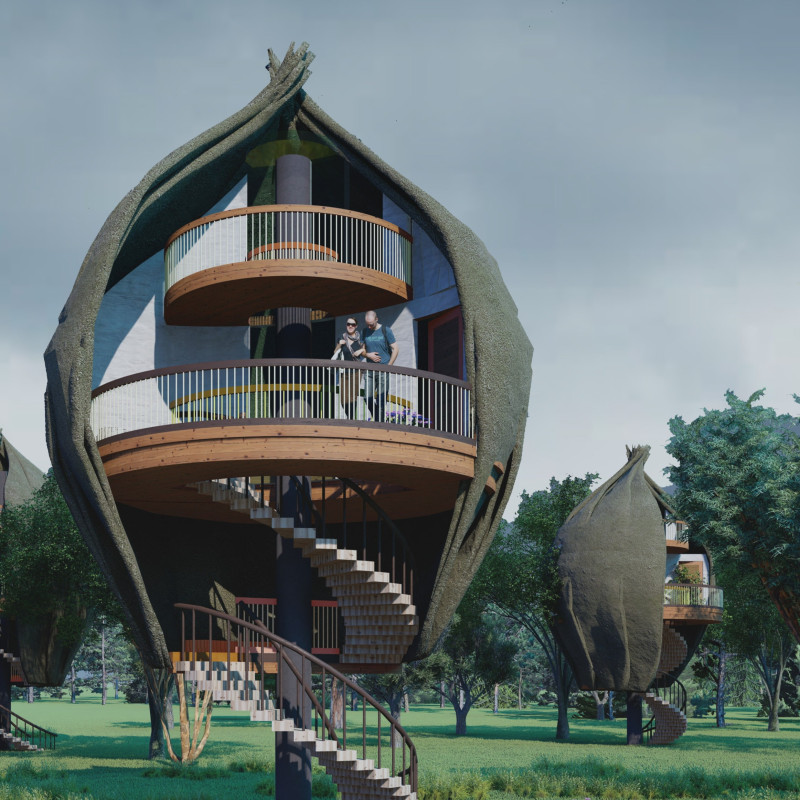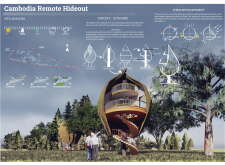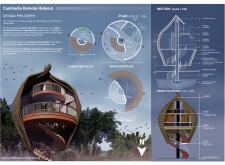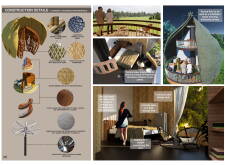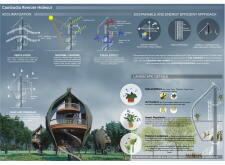5 key facts about this project
The Cambodia Remote Hideout is set within the tranquil landscapes of Cambodia, where cultural heritage and nature meet. It functions as a peaceful retreat, encouraging connection with oneself and the surrounding environment. The design takes inspiration from the lotus flower, a symbol of spirituality in the region, resulting in a structure that rises gracefully, suggesting growth and aspiration.
Conceptual Framework
The design uses the lotus bud as a central metaphor, symbolizing personal growth and the pursuit of enlightenment. This idea is embodied in a tiered layout that ascends toward the sky, creating a calm and reflective atmosphere. By allowing natural light to penetrate the spaces, the design fosters a welcoming environment that encourages contemplation and relaxation.
Material Composition
Materials are vital to the structure's integrity and character. A primary bamboo framework forms the building, ensuring it is light and adaptable. Lattice bamboo supports the overall design through connections secured with wire or cloth rope. Thatched roofs and woven bamboo walls define both the exterior and interior, contributing to the building’s warm texture and sustainable qualities.
Environmental Strategy
The design implements several strategies to respond to the local climate. It is oriented to allow cross-ventilation, helping to reduce humidity while ensuring comfort. North-facing openings invite soft, diffused light into the interior, while minimizing heat from the southern and western facades. The upper deck features cutouts to enhance airflow, using natural processes to cool the space effectively.
Landscape Integration
Surrounding the retreat, the landscape is designed to complement the architecture. Indigenous plants are carefully selected to promote ecological diversity and enhance the area’s natural beauty. The inclusion of dehumidifying plants like Parlor Palm and Rhynchostylis retusa aims to improve air quality, highlighting a commitment to sustainable living practices.
The upper deck also includes a dedicated meditation area. Designed for tranquility and privacy, it underscores the focus on spiritual well-being. The overall design encourages a sense of harmony with nature and a deep connection to local culture.


